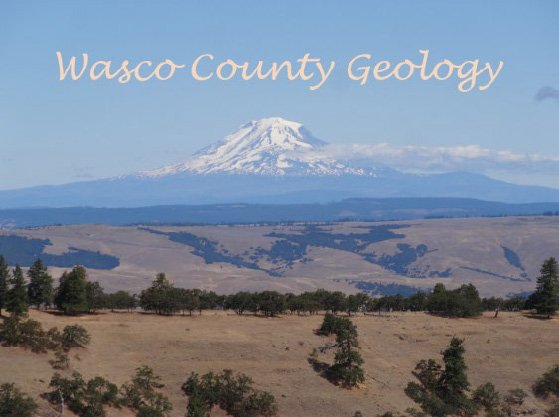Thomas Condon's Fossil Collection
/Thomas Condon with his pals Dr. Bill Orr (left) and GSOC President Rik Smoody (right).
Synopsis of the GSOC Friday night lecture given on May 12, 2017, with speaker Dr. William Orr, curator of the Condon Collection.
by Carol Hasenberg
Professor Emeritus and Condon Collection Curator Dr. William Orr spoke to GSOC on May 12 about Thomas Condon’s fossils. This collection was assembled for teaching and reference and ranks with the best collections for stratigraphic continuity and taxonomic breadth. Many specialists from around the world come to the University of Oregon to study its fossils.
Thomas Condon, 1822-1907, Frontier Missionary and Oregon’s First State Geologist, came to the Oregon Territory in 1852 after a childhood spent in County Cork, Ireland and New York State. He quickly became interested in the fossils to be found around the state of Oregon. In the course of his lifetime he lived in St. Helens, Forest Grove, Grand Prairie, Albany, Grande Ronde, The Dalles, and Eugene. His fossil collection contained over 100,000 marine and terrestrial fossils, and it was sold to the University of Oregon in 1907 for $15,000. No exact dollar figure is attached to it today – it is not insured because it is simply irreplaceable.
Condon collected fossils from all over the state of Oregon, but he collected more fossils from areas where they were more abundant. Each locale had fossils particular to the age and environment that is represented in its fossiliferous strata. These include the Willamette Valley with its Ice Age mammals, the John Day Basin with its early and middle Tertiary animals and plants, the marine fossils and exotics of the Wallowa mountains, late Tertiary mammals of Eastern Oregon basins, Ice Age lake fossils, and marine fossils of the Klamath Mountains and the Oregon coast. Condon color coded and numbered his fossils according to the age of the fossil--Paleozoic, Mesozoic, Tertiary, and Pleistocene. This coding, painted right on the fossils, came in handy when Orr needed to identify the collection from a storage area where the collection was mixed with other fossils, enabling Orr to rescue some 95% of the collection when the University of Oregon was ready to house it in the storage and research area that was built on campus.
Bill Orr, a biostratigrapher, is concerned how fossils tell us about the environment or the age they lived in. He often has been involved with biodating strata according to the fossils found in it and has found the Condon collection very useful to this endeavor. He explained that there were some characteristics of the collection that made it extra valuable. For example, if one considers that animals may look very different in different stages of their lives, and males and females of the same species may also differ in looks, then to be valuable in identification the collection will not only need the HOLOTYPE, or paragon, of any species but the PARATYPES, or other less stereotypical forms of that species. Condon was conscientious of collecting male, female, and juvenile versions of any fossil species.
Orr then discussed other ways in which fossils are used to identify species and the value of the Condon collection to these situations. Often only a small part of an animal survives the burial and fossilization process and a trained fossil expert will look for these PARATAXONS to identify and indicate the presence of certain animals in the fossil record.
Crinoid stem section from the British Geological Survey website. This site has some very good fossil descriptions. In the Middle Ages in England these fossils were given names based on their shapes from St. Cuthbert’s beads to fairy money.
Orr gave the examples of stem segments of crinoids, the boney ossicles armoring the hide of the giant Harlan groundsloth, mastadon molars and shark’s teeth. Parataxons are also used to extrapolate the appearance of an entirely new species from a tooth or other fragment of the creature; however, this process can be misleading in some cases. Orr gave an example from the collection of a distant cousin to horses and rhinos called a Chalicothere, where paleontologists gave it feet like those of a rhino, but it is believed now to have had huge claws.
Orr then gave examples of fossil animals that carries its younger self with it, as it grows to maturity. Ammonites (extinct sea creatures resembling the chambered nautilus) grow outward from their center and always look like ammonites. Other animals go through the process of ECDYSIS, or molting--some creatures grow by shedding a potential fossil behind. Trilobites are great examples of creatures whose stages produce another segment.
TAPHONOMY, or the history of the fossil from the creature’s death to discovery, also can tell paleontologists a great deal about the environment which produced the fossil. Condon took great care to record evidence of the taphonomy of his fossils.
Condon dated his fossils from comparing with guide fossils in the literature. Rodent fossils are good GUIDE FOSSILS for their cheek teeth, which are hard and fossilize well, and the creatures undergo rapid evolution. Ants bring up the cheek teeth and put them on top of their hills.
Thick shelled clam from the Eocene that delineated the shoreline of ancient Oregon. From “Fossil Localities of the Eugene Area, Oregon,” by Margaret L. Steere, Published in the Ore Bin, Volume 20, Number 6, June 1958. This publication is available online on the DOGAMI website.
Orr wrapped up the talk by discussing one of the most useful and famous fossils of the Condon Collection. The humble Venericardia, a thick-shelled clam, is a FACIES FOSSIL, or one only found in specific environments. Researchers used this characteristic to connect the dots to find the shoreline of Oregon during the Eocene.
ADDITIONAL READING
View some of the fossils of the Condon Collection at the University of Oregon’s Museum of Natural and Cultural History.


























































